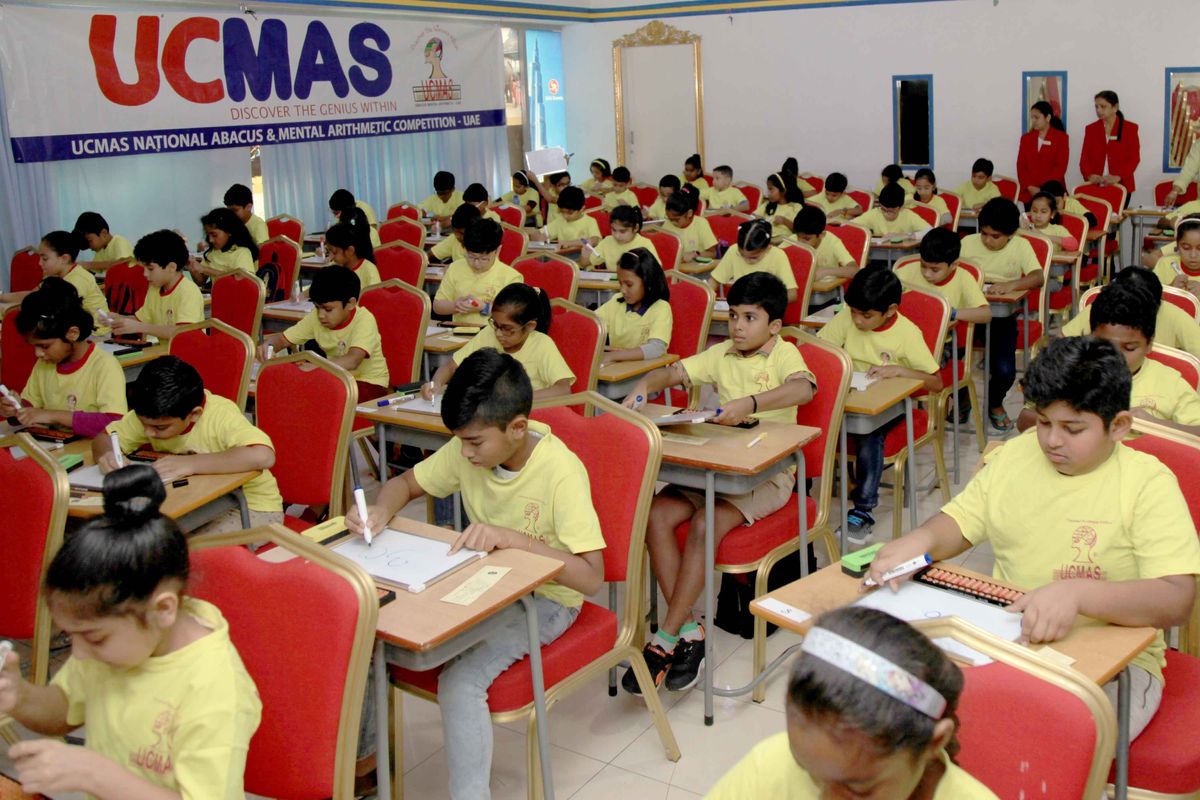Watching kids do lightning fast mental math is both mesmerizing and mind-blowing
Their finger twitching looks random, but WOW is it impressive.

2003 UCMAS National Abacus & Mental Arithmetic Competition
In the age of calculators and smartphones, it's become less necessary to do math in your head than it used to be, but that doesn't mean mental math is useless. Knowing how to calculate in your head can be handy, and if you're lucky enough to learn mental abacus skills from a young age, it can be wicked fast as well.
Video of students demonstrating how quickly they can calculate numbers in their head are blowing people's minds, as the method is completely foreign for many of us. The use of a physical abacus isn't generally taught in the United States, other than perhaps a basic introduction to how it works. But precious few of us ever get to see how the ancient counter gets used for mental math.
The concept is simple and can be taught from a young age, but it takes a bit of time and practice to perfect. Watch what it looks like for basic addition and subtraction at lightning speed, though:
If you don't know what they're doing, it looks like students are just randomly flicking their fingers and wrists. But they are actually envisioning the abacus while they move their fingers, as if they were actually using one.
There are various methods of finger calculations that make use of abacus concepts. Watch another method that uses both hands in action:
Even very young children can calculate large sums very quickly using these abacus-based mental math methods. Watch these little superstars add two-digit to four-digit numbers like it's nothing.
How do they do it?
Much of the skill here requires a solid understanding of how an abacus is used to calculate and lots of practice with the physical movements of calculating with it. That's not exactly simple to explain, as it take a couple of years of practice using an abacus—for these mental calculations, specifically the Japanese soroban abacus—to gain the skills needed to be able to calculate quickly. BBC Global shares how such practices are taught in Japan, not only for mental math but for overall cognitive memory:
Abacus mental math programs online recommend learning it between the ages of 5 to 13. It is possible to learn at older ages, but it might take longer to master compared to younger students.
But if there's a finger method you want to try for addition and subtraction up to 99, one that's simple and quick to learn is called chisanbop, in which ones are counted on one hand and 10s are counted on the other. Here's an explainer video that shows how it works:
Chisanbop!
Most of us carry calculators around in our pockets with us at all time, so such practices may feel like a waste of time. But learning new skills that tax our brain is like a workout for our mind, so it's not a bad idea to give things like this a spin. Even if we don't learn to calculate large numbers in the blink of an eye, we can at least exercise our mental muscles to keep our brains healthier. And who knows, maybe we'll get a party trick or two out of it as well.





 Rihanna Nails GIF
Rihanna Nails GIF

 Good luck trying to catch a gazelle.
Good luck trying to catch a gazelle. Chickens will eat just about anything.
Chickens will eat just about anything. There's actually a big difference between horses and zebras besides just the stripes.
There's actually a big difference between horses and zebras besides just the stripes. Stop Right There The End GIF by Freeform
Stop Right There The End GIF by Freeform